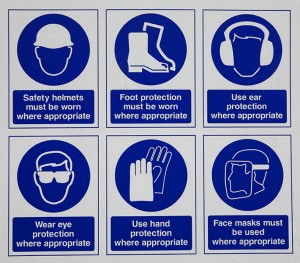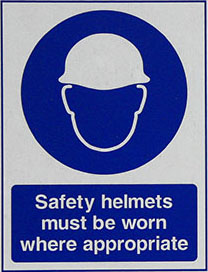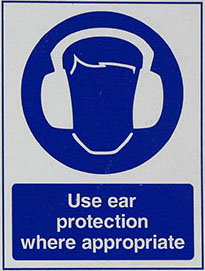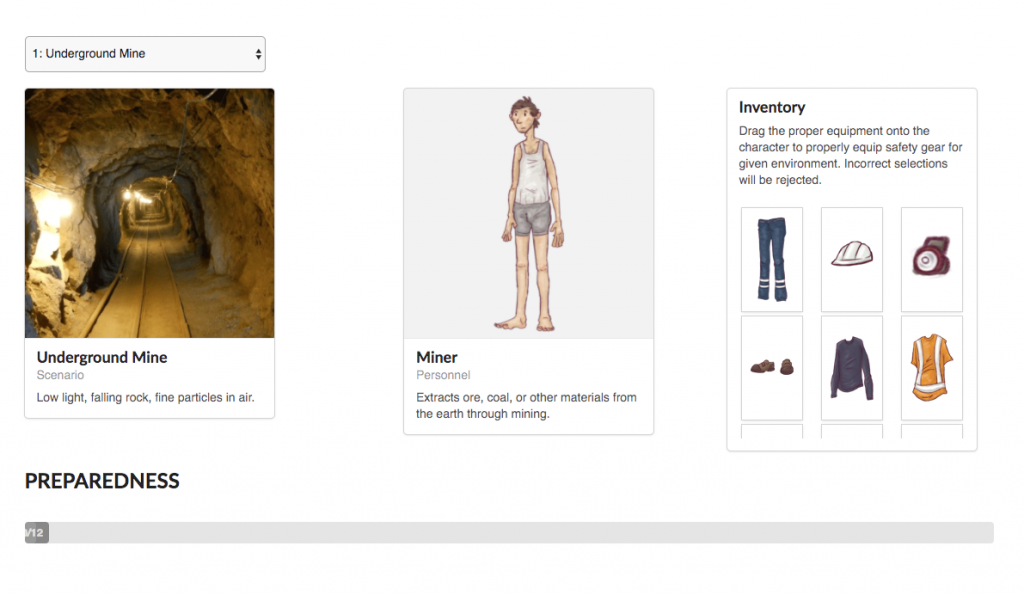Contents
Objectives
Upon completion of this lesson students should be able to:
- Explain open pit mining.
- Identify and demonstrate use of personal protective equipment.
Reading & Lecture
Surface Mining
Exploitation in which mining of ore, coal, or stone is carried out at the surface with essentially no exposure of miners underground is referred to as surface mining. Types of surface mining are as follows:
Open cast (strip) mining: Removal of large strips of overlying rock and soil to reveal ore
Open-Pit Mining: Removal of rock and soil creating a vast pit where ore can be extracted
Mountaintop Removal Mining: Removal of mountain tops with explosives. Land made flat after reclamation
Highwall Mining: A continuous miner cuts holes horizontally into the coal formation
Quarrying: A place where dimension stone or aggregate is mined.
Open-Pit Mining
Open pit mining is the process of mining any near-surface deposits by means of a surface pit excavated using one or more horizontal benches.
Open pit mines are often used in mining metallic or nonmetallic deposits and more sparingly in coal and other bedded deposits.
The purpose of the benches is to control the depth of the blast holes, the slope of the pit walls, and the dangers of highwall faces. The benches also provide enough length of face to allow sustained, uninterrupted production
Open pit mining is a large scale method in terms of production rate, responsible for more than 60% of all surface output. It continues to produce more mineral resources at lower cost to enable the mining of ever-decreasing grades of most metallic deposits.
| Mineral | Bench Dimensions | ||
|---|---|---|---|
| Height, ft (m) | Width, ft (m) | Slope | |
| Copper | 40-60 (12-18) | 80-125 (24-38) | 50 °-60 ° |
| Iron | 30-45 (9-14) | 60-100 (18-30) | 60 °-70 ° |
| Nonmetallic | 40-100 (12-30) | 60-150 (18-45) | 50 °-60 ° |
| Coal | 50-75 (12-23) | 50-100(15-30) | 60 °-70 ° |
A major concern in pit development is the proper design of the benches and the haul roads. The excavators reach and other dimensions of the equipment used generally determine the height and width of the working benches.
The design of haul roads is important for both safety and efficiency. The best-managed pits will have proper haul road width, banking, safety berms, and curve designs to allow the trucks to operate with the greatest safety and a low rolling resistance
A haul road is located at the side of the pit, forming a ramp up which trucks may drive, taking ore and waste rock
Waste rock is piled up at the surface, near the edge of the open cut. This is known as the waste dump. The waste dump is also tiered and stepped, to lessen degradation.
Ore which has been processed is called as tailings, and is normally slurry. This is pumped to a tailings dam or settling pond, where the water fades away. Tailings dams may frequently be toxic due to the presence of unextracted sulfide minerals, few types of toxic minerals in the gangue, and frequently cyanide which is utilized to treat gold ore via the cyanide leach method.
Personal Protective Equipment
Personal protective equipment (PPE) is equipment worn to minimize exposure to serious workplace injuries and illnesses.
These injuries and illnesses may result from contact with chemical, radiological, physical, electrical, mechanical, or other workplace hazards.
Personal protective equipment may include items such as gloves, safety glasses and shoes, earplugs or muffs, hard hats, respirators, or coveralls, vests and full body suits.
All personal protective equipment should be safely designed and constructed, and should be maintained in a clean and reliable fashion.
It should fit comfortably, encouraging worker use. If the personal protective equipment does not fit properly, it can make the difference between being safely covered or dangerously exposed.
When engineering, work practice, and administrative controls are not feasible or do not provide sufficient protection, employers must provide personal protective equipment to their workers and ensure its proper use.
Should meet American National Standards Institute (ANSI)
Employers are also required to train each worker required to use personal protective equipment to know:
- When it is necessary
- What kind is necessary
- How to properly put it on, adjust, wear and take it off
- The limitations of the equipment
- Proper care, maintenance, useful life, and disposal of the equipment
If PPE is to be used, a PPE program should be implemented. This program should address the hazards present; the selection, maintenance, and use of PPE; the training of employees; and monitoring of the program to ensure its ongoing effectiveness.
Employee Responsibilities
- Employees must use PPE in accordance with training and instructions
- Most job activities require the use of PPE
- PPE use is a requirement of the job
- If the employee cannot use the PPE then alternative PPE must be selected, the job must be modified to eliminate the hazard requiring PPE or the employee must change jobs
- Employee cannot sign waiver and accept risk of injury
- Would not remove liability
- Unethical to knowingly place an employee in an unprotected hazardous situation
- PPE is provided to protect employee and is not intended as an inconvenience
- The employer SHALL ensure that employees are provided and use appropriate personal protective equipment when they are exposed to hazards requiring their use
- Use of PPE has been incorporated into employee work plans and will be enforced as any other key responsibility/dimension including disciplinary action and may affect workers’ compensation eligibility
Routes of Exposure
- Inhalation
- Skin Absorption
- Ingestion
- Injection
Knowing the hazards and how to protect yourself is the key to safety.
Types of PPE
- Eye and Face Protection
- Head Protection
- Hearing Protection
- Respiratory Protection
- Foot and Leg Protection
- Hand and Arm Protection
- Skin Protection
- Electrical Protective Devices
- Fall Protection
Eye and Face Protection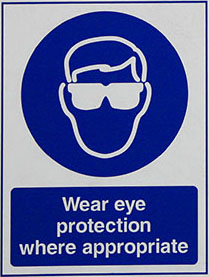
Required when employees are in areas where there is exposure to eye and face hazards from flying particles, molten metals, liquid chemicals, acids, caustic liquids, chemical gases or vapors or potentially injurious light radiation
Types of eye and face protection:
- Spectacles
- Goggles
- Face Shields
Classes and Types of Hard Hats
Type I hard hats — intended to reduce the force of impact resulting from blow to the top of the head
Type II hard hats- designed to provide protection against both side impact (lateral) and blows to the top of the head
Classes
Class G — General
Tested to withstand 2200 volts
Class E – Electrical
Tested to withstand 22 000 volts
Class C – Conductive
No electrical protection
Respiratory Protection
Required when employees are in areas effective engineering controls are not feasible to protect the health of the employee from harmful dusts, fogs, fumes, mists, gases, smokes, sprays or vapors.
Inhalation of hazardous materials damages delicate structure of the lung and may susceptible to respiratory disease. Direct route to the bloodstream.
Types of protection:
- Air-purifying
- Supplied-air
(respiration pro icon)
Foot Protection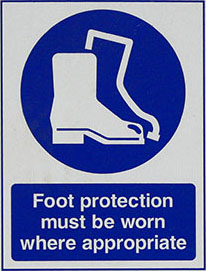
Required when employees are in areas where there is danger of foot injuries due to falling and rolling objects, slip hazards or objects piercing the sole, and where employees are exposed to electrical hazards.
Types of foot protection:
- Steel-toed boots
- Metatarsal protection
- Puncture- or slip- resistant soles
- Chemical resistance
- Waterproof and cold-weather footwear
(foot pro icon)
Hand and Skin Protection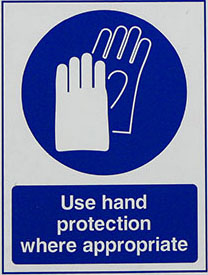
Required when employees are in areas where their hands and body are exposed to skin absorption of harmful substances, severe cuts or lacerations, chemical or thermal burns.
KEEP YOURSELF CLEAN
- Bathe or shower daily
- Keep fingernails clean and trimmed at all times
(glove pro icon)
Common Types of Gloves
Disposable: light-weight plastic; can help guard against mild irritants.
Fabric: cotton or fabric blend; improve grip or insulate from heat or cold.
Leather: guard against injuries from sparks or scraping against rough surfaces. Combine with an insulated liner when working with electricity.
Chemical Resistance: nitrile, neoprene, vinyl, etc; protect hands from chemical exposure
Metal Mesh: protect hands from cuts and scratches; used commonly with sharp instruments.
Aluminized Fabric: insulate hands from intense heat; commonly used with molten materials
Electrical Protective Devices
Requires when employee are in areas where there may be exposure to substantial electrical voltage
Rubber is considered best material
Must comply with ANSI requirements for rubber insulation gloves, matting, blankets, hoods, line hose and sleeves
Arc Flash PPE
Fall Protection
Requires when risk of falling at height of 6 feet or greater when area not guarded or protected by other fall protection measures
Work at height in aerial lifts, powered platforms and similar equipment
Body Harnesses , Belts
(fall pro icon)
Care of Personal Protective Equipment
- Always check PPE for damage before and after use
- Clean PPE before storing
- Dispose of and replace damaged PPE
- Properly store PPE and avoid conditions that could damage it such as light, moisture, heat and etc.
Personal Protective Equipment Acquisition and Replacement
- PPE is provided by Supervisor
- If performing activity and you do not have PPE, contact Supervisor for PPE prior to starting activity
- Employee may be responsible for lost or damaged PPE
- State Equipment Use Policy
Activity
Complete the PPE Mine Scenario activity. In this activity you will be presented with a scenario.
- Begin by clicking the Begin This Scenario button, below.
- Select the scenario you will complete from the dropdown box on the left side of the screen.
- Based on that scenario, select the most appropriate PPE by dragging + dropping PPE items onto the worker. (The screenshot below shows the beginning of one scenario.)
- Your progress is tracked by the Preparedness slider at the bottom of the screen.
